Gymnosperms (Seed Producing Plants: Conifers, Cycads, Ginkgo)
Alternative titles: Gynkophyta
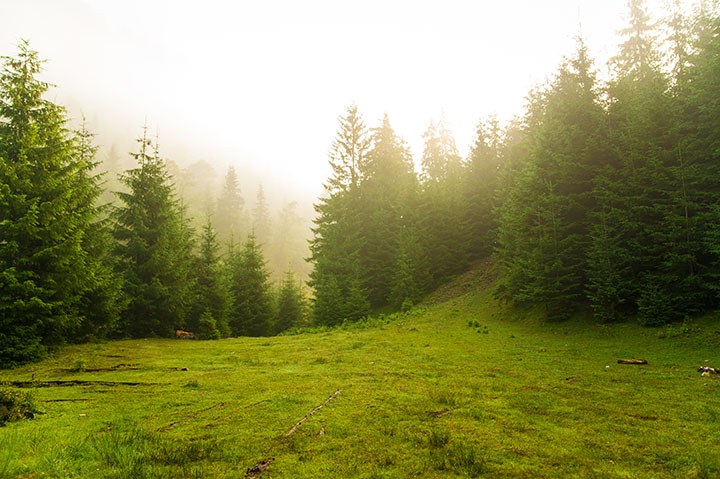
Gymnosperms are plants producing seeds that are not encapsulated within the fruit or the ovary. Gymnosperm seeds are open to the air and directly pollinated. Although it is less frequently used, acrogymnospermae can also be used to refer to gymnosperms. It refers to a wide variety of plants, such as conifers, ginkgos, cycads, and gnetophytes.
The origin of the term gymnosperm is greek. Gymnos, meaning “naked” and sperma being “seed” connects the etymology of the word directly to its specific style of seed production – unenclosed and exposed for pollination.
Gymnosperm seeds develop on the surface of leaves or scales and are often modified into cones. A female gametophyte is found on the exposed bracts of the female cone and is not enclosed in an ovary.
A gymnosperm differs from an angiosperm in that the latter produces seeds within ovules. To remember the distinction, consider that angiosperms are flowers like daisies, roses, tomatoes, orchids, and mint - all plants that bear fruit.
Despite being less likely to be eaten than some angiosperms, gymnosperms are still vital to the ecosystems and food chains within which they exist.

Life Cycle of Gymnosperms
Gymnosperms are vascular plants, which means that their life cycle is dominated by sporophytes. Sporophytes are diploid multicellular generation – that is, they contain two sets of chromosomes. During meiosis, reproductive spores are released into the air from structures' called sporangia.
Conifers, which are monoecious plants, produce both male and female cones. Known as pollen cones, the male cones produce microspores, which result in pollen grains, also known as male gametes. The sperm cells will eventually enter the egg cells through a pollen tube. In the megasporangium, female ovules give birth to megaspores (also known as haploids), then become ovules. A diploid zygote is produced when the pollen fertilizes an ovule. The result is an embryo, coated in seed tissue. The development of reproductive structures, fertilization, and the formation of seeds may take years.
Some of us understand the science behind this process more readily than others, but if you live where conifers are plentiful, you've likely seen it in action: yellow pollen dust travels on the wind, passing through your nostrils and coating cars and windows, causing allergic reactions in both humans and animals.

Gymnosperms Through The Ages
As with so many plants, animals, and fungi, there are many species in the evolutionary record that have not survived to our era. Gymnosperms are much the same. The Pteridospermales and Cordiatales phyla are now extinct. Their first appearance on earth occurred in the Palaeozoic era, and they expanded during the Mesozoic era before going extinct with many other animals and plants in the Jurassic era.
We still have gymnosperms like Coniferophyta, Cycadophyta, Ginkgo biloba, Gnetophytes, and Welwitschia mirabilis, which are described in the following sections:
Conifers (Coniferophyta)
Conifers are perennial, woody, and cone-bearing land plants. The common name conifer is used in their scientific moniker, but they can also be referred to by Pinophyta, Coniferophyta, or Coniferae, if we want to be formal. Although some conifer species and varieties fall into the category of shrubs, most conifers are trees.
Despite having fewer species than others, conifers are an extremely important group of plants since they frequently cover big areas. Although the rainforest has more biodiversity, boreal conifer forests are the planet's largest carbon sink.
This makes the protection of boreal conifer forests all the more critical. In the northern hemisphere, areas like the Taiga are constantly under threat from harvesting and development. Coniferous trees are economically valuable for their soft lumber and paper production. These valuable and powerful ecosystems are still being fought for by indigenous communities.
The northern hemisphere is known for its extensive conifer forests, but there are conifers in the southern hemisphere as well, where the climate is similarly cool.
Types of Conifers, Healing Properties, Historical Significance
Spruce
Spruces are tall evergreen trees belonging to the pine family, whose seed cones are hanging down and falling to the ground intact. They can be distinguished from other members of the pine family by their cone structure. Spruce needles are attached individually, another distinguishing feature. Colorado blue spruce, Norway spruce, and oriental spruce are popular species. It is also a healing tree, containing antimicrobial and antiseptic properties. Spruce can help with abrasions, cuts, and acne. Tea made from dried spruce tips can help with lung congestion, pneumonia, and whooping cough.

Hemlock
There are 8 to 10 species of hemlock, also known as the Tsuga family. The common name refers to the smell of the tree's crushed leaves, which is similar to poison hemlock - though they are not related. Tsuga is not poisonous. Different species of these trees can grow 50 - 200 feet tall and are native to North America and East Asia. The bark is scaly and the branches are arranged in flattened sprays.

Cedar
Throughout human history, cedar trees have been loved and respected. Cedar trees are revered for their "grandmother" attributes - long-lived, pest and disease-resistant, and capable of supporting a number of ailments and health concerns.
There is a lot of misunderstanding about cedars, which only include 4 species: Cedrus libani, Cedrus atlantica, Cedrus brevifolia, and Cedrus deodara. All of these cedar species are native to the Mediterranean and the mountainous regions of the Western Himalayas. Many of these trees, Cedrus libani in particular, are threatened species.
True cedars are characterized by needles arranged in dense, spiral clusters. The needles are waxy. Its cones are the true give-away: they grow upright and are barrel-shaped.
The trees of North America, commonly known as cedars, are of the cypress family.
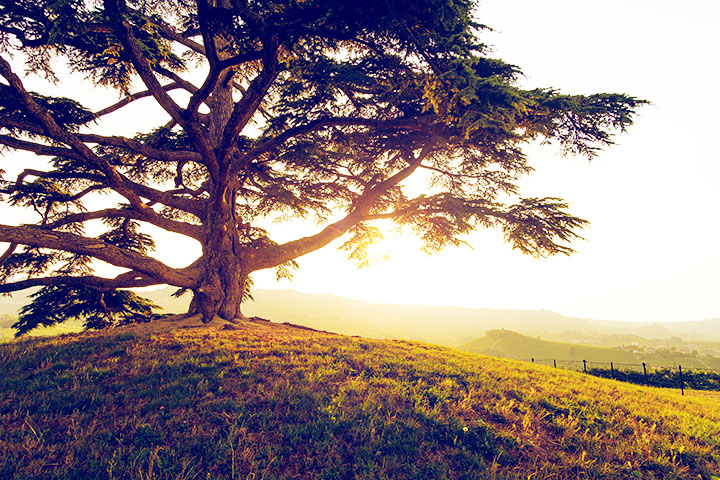
Yew
Taxus baccata, or Yew, is an evergreen tree that is native to Europe, Northwest Africa, Iran, and Southwest Asia. This tree is poisonous. Munching on the leaves can result in death. It is a smaller tree, often grown today as an ornamental, but it can live for up to 600 years. The bark is thin and scaly brown. The seed cones contain a single seed and are surrounded by fleshy scales that resemble berries, called an aril.

Sequoia
The giant sequoia tree, or Sequoiadendron giganteum, is the largest tree in the world. The largest sequoia forest covers 48,000 acres – the size of Cleveland, Ohio. The oldest fossil of these trees dates back to 200 million years ago when they were thriving in North America. Some trees living today are 3,000 years old. They grow quickly and require a lot of water. A thick and tannin-rich bark protects these trees from fires and insects. However, they need well-draining soil. Walking around the roots of a giant sequoia can cause considerable damage, so be kind – keep your distance. At least six different types of bats inhabit the basal hollows of Sequoia trees.

Redwood
The California redwood, or Sequoia sempervirens, is the tallest tree on Earth and is distinguished from its relative, the Sequoiadendron giganteum, by its habitat. Redwoods grow near the coast, while sequoias grow in subalpine regions. They have a conical crown and long, flat leaves that look like scales. As you might guess, their common name comes from the beautiful hue of their bark.

Cypress
Cypress trees are coniferous trees belonging to the Cupressaceae family. Often referred to as a cedar, this deciduous tree native to northern North America has a straight trunk that tapers at the base. Their needles are short and have a feathery-quality to their appearance. They grow well in areas with lots of water. Trees like this one have antimicrobial and antibiotic properties. The smell is fresh and resinous.

Fir
Firs, or abies, is a genus of 48-56 species within the Pinaceae family. The true fir tree is native to North and Central America, Asia, Europe, and Northern Africa. As their common names might suggest, Douglas fir, hemlock fir, and join fir are not true firs. The fir tree is cultivated for lumber and as ornamentals - both in landscaping and as a Christmas tree. The needle-like leaves of these trees grow directly from the branches. The needle’s bases look like little suction cups. In North America, they are found primarily west of the Rockies. A balsam fir is known for its strong aroma, which is considered to be a comforting scent by many.

Juniper
Like cypress trees, coniferous trees and shrubs, junipers or Juniperus belong to the Cupressaceae family. There are between 60-70 species of this aromatic evergreen.
The northern hemisphere is abundant with Junipers, which are grown for their wood and as ornamentals. The leaves are arranged in whorls of two or three and resemble needles. These bluish cones are often called berries in herbal medicine due to their berry-like appearance. Foods and beverages, notably gin, are often flavoured with these cones.

Pine
Because of their distinct characteristics, pine trees and members of the Pinus genus are among the best-known plants in the world. More than 120 species of pine pine are found throughout the world - a vast and diverse genus of plants we will explore on another day. Almost exclusively found in northern hemisphere forests, these woody perennials can usually be distinguished from one another by counting the number of needles growing from their branches. For example, white pine has needle bundles of 5. A red pine (also known as a Norwegian pine) will have two.

Larch
The European larch, or Larix decidua, is a medium-to-large sized deciduous coniferous tree that reaches up to 135 ft tall. Its crown is conic but will flatten with age. In autumn, its needle-like leaves turn a bright yellow before they fall from the branches. The wood of the European larch is tough and durable and used for boat building.

Cycads (Cycadophyta)
Cycads are an ancient group of gymnosperms.
In the Jurassic period, cycads grew all over the world, so much so that the period is sometimes called “the age of the cycads”. Despite their diminished variety and distribution, cycads remain a minor component of tropical and subtropical regions today.
Due to human impacts on tropical and subtropical ecosystems, ancient species of cycads that have traveled through the ages of our planet's history are at risk. Microcycus, for instance, is at risk for extinction today in Cuba. Similarly, some species of sage palm are becoming increasingly popular in gardens around the world due to their large attractive leaves. While some varieties are called palms, they are not related.
Cycads grow at a very slow rate. The seeds of these plants are produced on open leaves or carpophylls. Although they are woody plants, they have a pachycaul stem - meaning their stem is disproportionately thick and branched.
Sago palms, Macrozamia polymorpha, Australian Nut Palm, Ceratozamia, and Fern Palm are popular varieties.
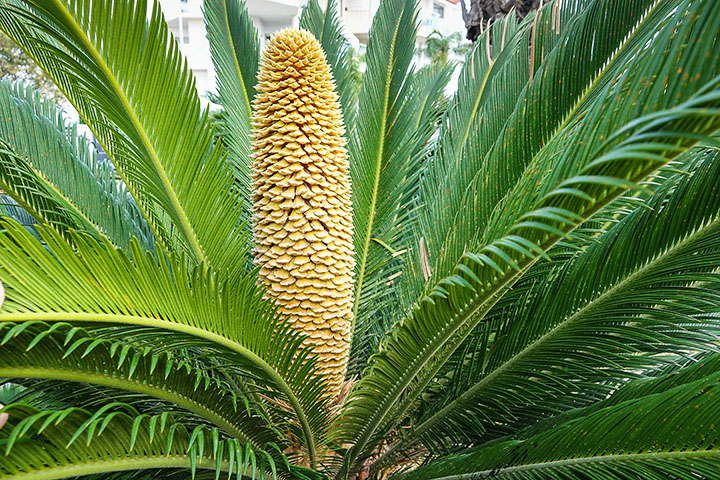
Ginkgo biloba
All gymnosperms are distinct, but Ginkgo biloba belongs to a different genus. Native to China, this plant is also called maidenhair (unrelated to the fern of the same name). Because of its healing properties, it has been revered and cultivated for generations.
It wasn’t always a lonely species member, however. Ginkgo biloba is actually the only remaining survivor of an ancient group of plants, Ginkgophyta, the rest of which are now extinct. Because of this, some people refer to ginkgo as a living fossil. It is possible for some specimens to reach over 150 feet in height. A dioecious plant, it produces pollen and seeds on separate trees.
Leaf shapes of ginkgo are distinctive - they are two-lobed and have a beautiful green color. It contains powerful antioxidants and can reduce inflammation, which is useful for arthritis, inflammatory bowel disease, strokes, and heart diseases.

Gnetophytes or Gnetophyta
Gnetophytes are a group of seed plants with a vascular system that make up the phylum Gnetophyta. There are only three genera: Ephedra, Gnetum, and Welwitschia. They all belong to separate families, but a single order. The gymnosperms are the only ones to have vessel elements, and they exhibit a number of features in common with flowering plants, called angiosperms. There is still a lot to learn about these evolutionary relationships.
Approximately 90 species exist, some of which inhabit moist rainforest environments. Others live in arid desert landscapes. Like other gymnosperms, they produce cones that contain the seeds. The double fertilization process distinguishes gnetophytes from their fellow gymnosperms.
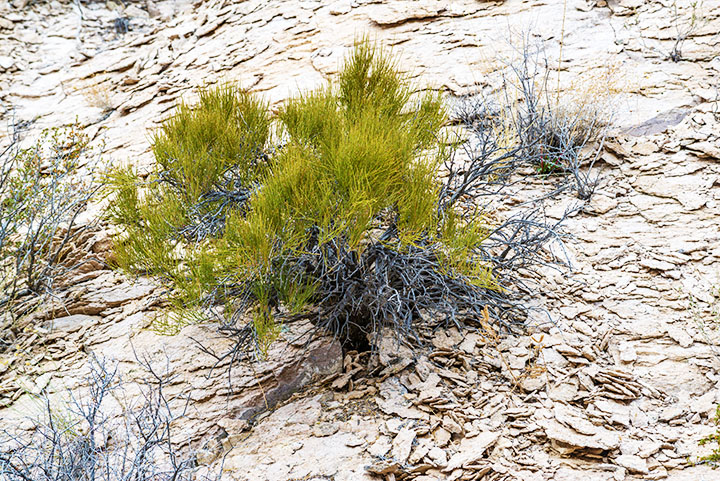
More Questions About The Mysteries Behind These Naked Seed Plants
Scientists and the rest of us continue to be fascinated by the plant world, and gymnosperms in particular. In this guide, we provide the basics, but ecosystems play a central role in the process. As scientists piece together the evolutionary history of gymnosperms, the search for fossils continues to supplement the fossil record. Gymnosperms may be the ancestors of angiosperms, but more research and discovery are needed to prove this.
Many gymnosperm species are on the brink of extinction due to human behavior. With swift and aggressive climate initiatives, we might be able to save the precious eco systems where gymnosperms live, and provide some answers in the midst of our mystery.
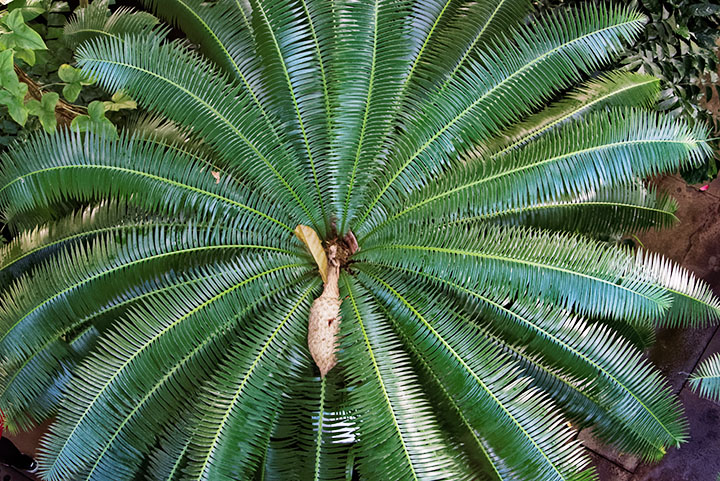
families in gymnosperms
Jump to families starting with:
News coming your way


































